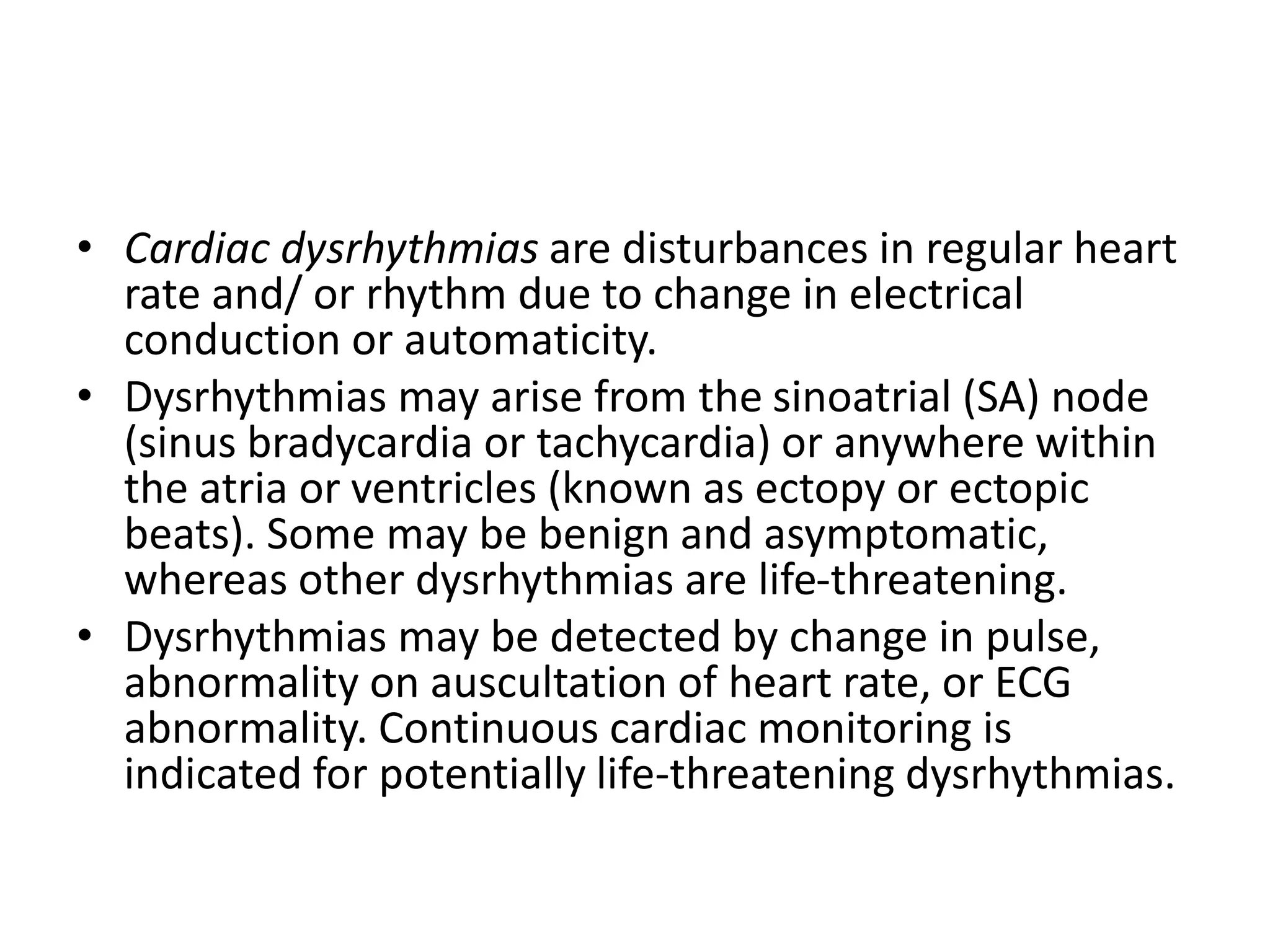This document discusses several types of cardiac dysrhythmias including sinus tachycardia, sinus bradycardia, premature atrial contractions, paroxysmal atrial tachycardia, atrial flutter, and atrial fibrillation. For each dysrhythmia, the document discusses etiology, characteristics based on ECG analysis, and general management approaches.













![Analysis
• Rate: may be slow or fast.
• Rhythm: will be irregular, caused by the early occurrence of thePAC.
• P wave: will be present for each normal QRS complex; the P wave of
the premature contraction will be distorted in shape.
• PR interval: may be normal but can also be shortened, depending
on where in the atria the impulse originated. (The closer the site of
atrial impulse formation to the atrioventricular [AV] node, the
shorter the PR interval will be.)
• QRS complex: within normal limits because all conduction below
the atria is normal.
• T wave: normally conducted.](https://image.slidesharecdn.com/11cardiacdysrhythmias-230310120234-94ab415f/75/11-Cardiac-Dysrhythmias-pptx-14-2048.jpg)














































